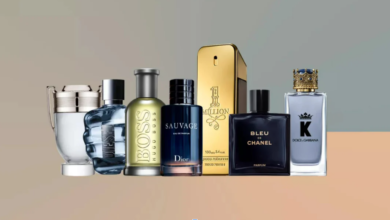Transform Your Silver Necklace in Minutes

Your sterling silver necklace holds sentimental value and adds elegance to any outfit, but over time it can lose its lustrous shine. Tarnish, discoloration, and dullness are common problems that make your cherished jewelry look older than it actually is. The good news is that restoring your silver necklace to its original brilliance doesn’t require expensive professional cleaning services or hours of tedious work.
This comprehensive guide will walk you through everything you need to know about revitalizing your sterling silver necklace quickly and effectively. Whether you’re dealing with light tarnish or heavy buildup, you’ll discover simple yet powerful cleaning methods using household items you likely already have. From understanding what causes silver to tarnish to learning proper maintenance techniques, you’ll gain the knowledge to keep your jewelry looking stunning for years to come. In just minutes, you can transform a dull, tarnished necklace into a gleaming piece that looks fresh from the jeweler’s display case.
Understanding Sterling Silver
Sterling silver has captivated jewelry lovers for centuries with its brilliant white shine and remarkable versatility. This precious metal alloy consists of 92.5% pure silver combined with 7.5% other metals, typically copper, which gives it the strength needed for everyday wear. The addition of these metals makes sterling silver more durable than pure silver while maintaining its beautiful appearance, which is why you’ll often see the “925” stamp on authentic pieces.
The appeal of sterling silver for romantic jewelry goes beyond its aesthetic qualities. Its affordability compared to platinum or white gold makes it accessible for expressing love and commitment without breaking the bank. The metal’s natural luster complements all skin tones beautifully, creating a timeless elegance that works for both casual and formal occasions. Sterling silver also holds intricate details exceptionally well, allowing jewelers to craft delicate designs that capture emotional significance.
However, the same copper content that strengthens sterling silver also makes it reactive to environmental elements. When exposed to air, moisture, and certain chemicals, the copper oxidizes and creates that familiar dark tarnish on the surface. This natural process doesn’t damage the silver itself but merely creates a thin layer that obscures its beauty. Understanding this characteristic helps you appreciate that tarnish is reversible and your necklace can always be restored to its original glory with proper care.
See also: Timeless Elegance: The Ultimate Guide to Men’s Linen Suits for Beach Weddings
Common Issues with Sterling Silver
Tarnish is the most frequent problem affecting sterling silver necklaces, appearing as a yellowish, brown, or black discoloration that develops over time. This occurs when sulfur compounds in the air react with the silver’s surface, creating silver sulfide. The speed of tarnishing varies depending on your environment—humid climates, exposure to perfumes, lotions, and even certain foods can accelerate the process. You might notice tarnish developing faster during summer months or in coastal areas where salt air is present.
Beyond tarnish, sterling silver can experience deeper discoloration if left uncleaned for extended periods. This manifests as stubborn dark spots or patches that don’t wipe away easily with a simple cloth. Corrosion, though less common, can occur when silver is exposed to harsh chemicals like chlorine or ammonia, which can actually pit the metal’s surface. Scratches from improper storage or everyday wear also diminish the necklace’s appearance, creating a dull, worn look rather than a smooth, reflective finish. Recognizing these issues early allows you to address them before they become more challenging to reverse.
Materials Needed for Cleaning
Before you begin transforming your tarnished necklace, gather a few simple materials that you probably already have at home. A soft, lint-free cloth is essential for gentle wiping and buffing—microfiber cloths work perfectly for this purpose. You’ll also want a dedicated jewelry polishing cloth, which contains special compounds designed specifically for silver and provides an extra level of shine. For deeper cleaning, baking soda serves as a mild abrasive that lifts tarnish without scratching the metal’s surface.
A gentle dish soap mixed with warm water creates an effective cleaning solution for routine maintenance, while aluminum foil and salt offer a chemical reaction method for stubborn tarnish. Keep a small, soft-bristled toothbrush handy for reaching intricate details and chain links where tarnish tends to hide. Finally, have a clean bowl for mixing solutions and a dry towel for the final drying stage. These inexpensive, accessible items form a complete cleaning kit that rivals professional results, allowing you to restore your sterling silver necklace’s brilliance without spending money on specialty products or services.
Step-by-Step Cleaning Process
Begin by preparing your workspace with a clean, flat surface covered with a soft towel to protect your necklace from scratches. Fill a small bowl with warm water and add just a few drops of mild dish soap, creating a gentle cleaning solution. Submerge your sterling silver necklace in this soapy water and let it soak for five to ten minutes. This initial soaking loosens surface dirt, oils from your skin, and light tarnish, making the subsequent cleaning steps more effective.
After soaking, take your soft-bristled toothbrush and gently scrub the necklace, paying special attention to chain links, clasps, and any decorative elements where grime accumulates. Use circular motions with light pressure—you’re not trying to scrub aggressively, just coaxing away the buildup. For pendants with intricate designs or textured surfaces, angle the bristles to reach into crevices. This gentle brushing removes the loosened tarnish and debris without damaging the metal.
For stubborn tarnish that doesn’t respond to soap and water, try the aluminum foil method. Line a bowl with aluminum foil, shiny side up, and place your necklace on top. Sprinkle two tablespoons of baking soda over the jewelry, then pour hot (not boiling) water into the bowl until the necklace is fully covered. You’ll notice a slight fizzing reaction as the chemical process transfers tarnish from the silver to the aluminum. Let it sit for three to five minutes for light tarnish, or up to ten minutes for heavier buildup.
Alternatively, create a paste using three parts baking soda to one part water for targeted tarnish removal. Apply this paste directly to tarnished areas using your fingers or a soft cloth, then gently rub in circular motions. The mild abrasive action of baking soda lifts tarnish effectively without scratching. This method works particularly well for localized dark spots or when you need more control over the cleaning process. Rinse the paste away thoroughly with warm water once the tarnish disappears.
For a final polish that brings out maximum shine, use your jewelry polishing cloth to buff the entire necklace. These cloths contain special polishing compounds that remove any remaining tarnish residue and create a brilliant, mirror-like finish. Rub the necklace with firm but gentle strokes, working in one direction rather than back and forth. You’ll see the cloth darken as it picks up residual tarnish—this is normal and indicates the polishing is working. Continue buffing until your necklace gleams with its original luster, transforming from dull and tarnished to radiantly beautiful.
Rinsing and Drying
Once you’ve completed the cleaning process, thorough rinsing is essential to remove all traces of cleaning solutions, soap residue, and loosened tarnish particles. Hold your necklace under lukewarm running water, gently moving it to ensure water flows through every chain link and around all decorative elements. Take your time with this step—any remaining soap or baking soda can leave a film that dulls the shine you’ve just worked to restore. For necklaces with delicate pendants or gemstone accents, be particularly careful to rinse around settings where residue can hide.
Proper drying prevents water spots and protects your newly cleaned silver from immediate re-tarnishing. Pat the necklace gently with a clean, soft towel to remove excess water, then lay it flat on a dry towel in a well-ventilated area. Avoid hanging it to dry while still wet, as water can pool in certain areas and leave marks. For faster drying, you can gently blot with a microfiber cloth, which absorbs moisture more effectively than regular towels. Ensure the necklace is completely dry before storing it—any remaining moisture trapped in chain links can accelerate tarnishing and diminish the results of your careful cleaning efforts.
Additional Tips for Maintenance
Keeping your sterling silver necklace beautiful requires minimal effort when you incorporate smart maintenance habits into your routine. Store your necklace in an airtight container or a zip-lock bag with anti-tarnish strips to minimize exposure to air and moisture, which are the primary culprits behind tarnish formation. Avoid storing multiple pieces together without separation, as silver can scratch when jewelry rubs against each other. A fabric-lined jewelry box with individual compartments offers ideal protection while keeping your collection organized.
Remove your sterling silver necklace before swimming, showering, or exercising, as chlorine, soap residue, and sweat accelerate tarnishing and can even cause permanent damage. Apply perfumes, lotions, and hairsprays before putting on your necklace, allowing these products to dry completely first. The chemicals in beauty products react with silver and create stubborn discoloration that requires more intensive cleaning. When you’re not wearing your necklace, give it a quick wipe with a soft cloth to remove skin oils and environmental residue—this simple thirty-second habit prevents buildup and keeps tarnish at bay. Regular gentle cleaning every few weeks maintains your necklace’s brilliance and reduces the need for deep cleaning sessions, ensuring your cherished piece remains a stunning expression of elegance and sentiment. Many jewelry brands, including En Route Jewelry, offer care guides and polishing cloths specifically designed for sterling silver maintenance, which can be helpful resources for keeping your pieces in pristine condition.
Keeping Your Silver Necklace Radiant
Transforming your sterling silver necklace from tarnished and dull to brilliantly radiant is simpler than you might have imagined. With just a few household items and minutes of your time, you can restore the lustrous beauty that makes your jewelry special. The cleaning methods outlined in this guide offer flexible solutions for every level of tarnish, from quick maintenance wipes to intensive aluminum foil treatments that tackle stubborn discoloration.
Beyond the immediate satisfaction of seeing your necklace gleam like new, you’ve gained valuable knowledge about preventing future tarnish through proper storage and mindful wearing habits. By incorporating these simple maintenance practices into your routine, you’ll spend less time cleaning and more time enjoying your sterling silver’s timeless elegance. Your cherished necklace represents memories, sentiment, and personal style—it deserves care that preserves its beauty and significance. With these techniques at your fingertips, you can confidently keep your romantic jewelry looking stunning for years to come, ensuring it continues to add that perfect touch of sophistication to every occasion.


